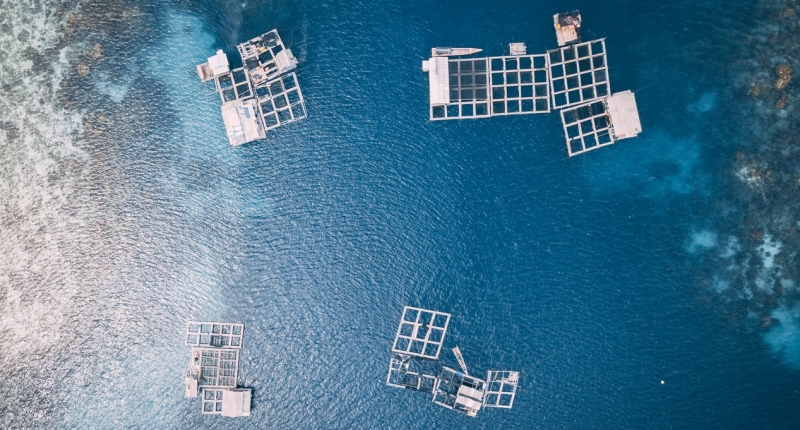Varying Perceptions of Aquaculture Around the Globe and Through Time

As captures from wild fisheries stagnate and a growing world population demands more protein, sustainable aquaculture represents a viable, and vital, way to supplement protein demand. But how does the world feel about aquaculture, and does the public distinguish between different types of aquaculture?
A recent study, conducted by the SNAPP Open-Ocean Aquaculture Expert Working Group and published in PLOSOne, quantified public sentiment concerning different types of aquaculture, particularly nearshore and offshore.
In an assessment of newspaper headlines across nations and through time (1984-2015), the study found that ‘marine’ and ‘offshore’ aquaculture were covered more negatively while general aquaculture sentiments were positively trending. The study also found offshore aquaculture to be poorly represented in the United States.
“Aquaculture is growing. But to do so sustainably will require effective communication on behalf of scientists' and managers' with the public about aquaculture - offshore potential being one aspect of that dialog.”
- Halley Froehlich, Postdoctoral Associate, SNAPP Sustainable Aquaculture
Offshore aquaculture practices, however, have the potential to be more sustainable than poorly-managed nearshore aquaculture sites where land-use and water quality issues, among others, can be of concern.
Thus, a better understanding of what is impacting the future development of offshore aquaculture, including public perception, may lead to more informed decisions concerning implementation and help to provide a more sustainable protein source worldwide.
More information about the SNAPP Open-Ocean Aquaculture Working Group
---
Public Perceptions of Aquaculture: Evaluating Spatiotemporal Patterns of Sentiment around the World
Froehlich, H.E.; Gentry, R.R.; Rust, M.B.; Grimm, D.; Halpern, B.S.
PLOSOne, January 2017, doi: 10.1371/journal.pone.0169281
Media
'Spatiotemporal patterns' indicate improving perceptions of aquaculture
